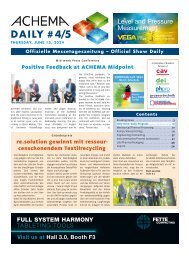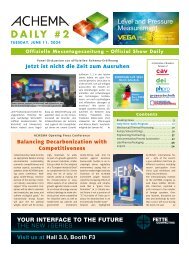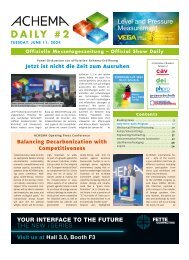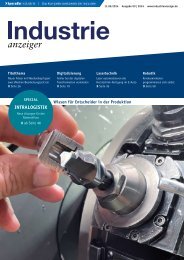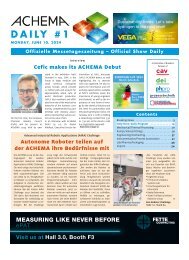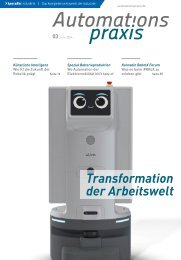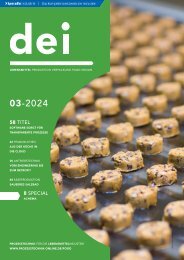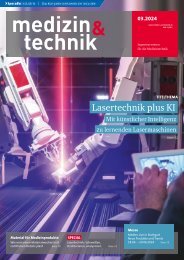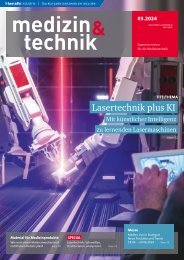EPP Europe P2.2023
You also want an ePaper? Increase the reach of your titles
YUMPU automatically turns print PDFs into web optimized ePapers that Google loves.
gineering tools or line code, there are obstacles on<br />
the path to robot-based automation that users often<br />
underestimate. Here are some tips on how to avoid<br />
three of the most important stumbling blocks.<br />
Programming effort<br />
The time required to program an application is not<br />
usually underestimated, but there are other pitfalls<br />
during this phase. These include process tolerances<br />
and variances that have not been taken into account;<br />
the increased complexity of incorporating<br />
sensors, or establishing communication between the<br />
robot and a PLC. Programming a system is often a<br />
tailor-made and complex process that is difficult to<br />
adapt. Programmers often have their own style,<br />
which can make the resulting code or program difficult<br />
for other programmers to understand and/or<br />
modify. In this case, the no-code/low-code solutions<br />
currently on the market can better support users.<br />
Thanks to pre-defined function blocks, programs can<br />
be constructed and structured in a clear and understandable<br />
manner. Using the right software, process<br />
tolerances and variances can also be automatically<br />
compensated, analyzed, and optimized. If the corresponding<br />
interfaces are already integrated, the effort<br />
required to connect sensors or set up a PLC communication<br />
is also significantly reduced.<br />
Effort during commissioning<br />
Programs can be structured and made traceable using pre-defined function blocks.<br />
Before commissioning, the process can be simulated as realistically as possible in a 3D<br />
simulation environment and tested<br />
A rule of thumb states that the cost of the robot<br />
itself is only about one third of the initial cost of the<br />
cell, and experience reveals that around 45 percent<br />
of typical costs are incurred during ramp-up. This is<br />
because users often underestimate the time required<br />
for commissioning. Although the system is programmed<br />
offline and simulated in advance, discrepancies<br />
between theory and practice often only become<br />
apparent during commissioning. This means<br />
that, despite preparation, the process can take significantly<br />
longer than<br />
planned, and necessary adjustments<br />
can quickly become<br />
expensive. Factors that were<br />
not apparent during digital<br />
preparation may need to be<br />
addressed on-site during commissioning.<br />
This makes this<br />
phase difficult to calculate.<br />
Using consistent tools, rampup<br />
can be implemented in a<br />
controlled manner, and with-<br />
Source: ArtiMinds Robotics<br />
Advanced robotics applications such as the assembly of flexible cables pose a major challenge for<br />
classical robot programming<br />
Source: ArtiMinds Robotics<br />
<strong>EPP</strong> <strong>Europe</strong> » 11 | 2023 49



